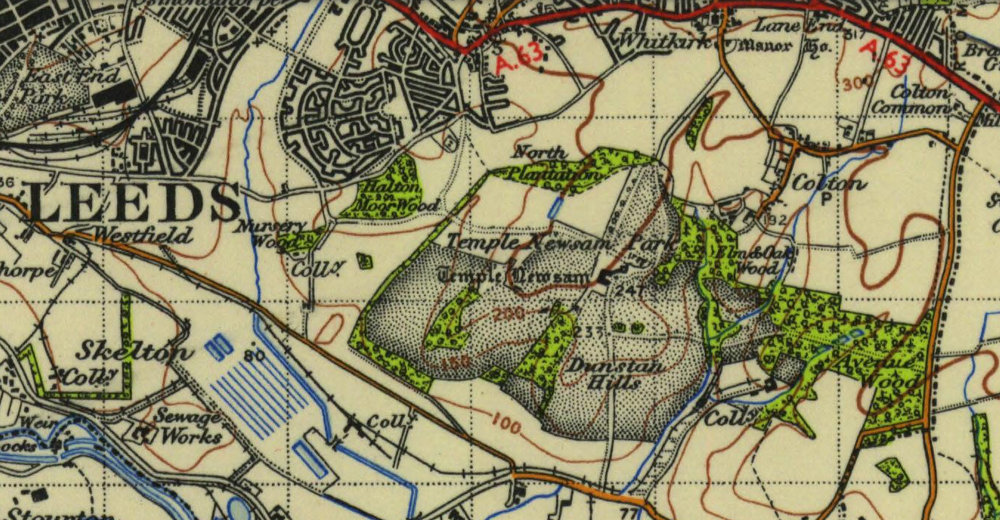living by quarries
Alan Bennet wrote about visiting Temple Newsam, a 17th century house just outside Leeds, when he was nine or ten, in the London Review of Books, 8 November 2012 :
Visiting Temple Newsam was always a treat, as it still is more than half a century later. Back in 1947, though, with the country in the throes of the postwar economic crisis, the push was on for more coal and the whole of the park in front of the house was given over to open-cast mining, the excavations for which came right up to the terrace. From the state rooms you looked out on a landscape as bleak and blasted as a view of the Somme, an idyll, as it seemed to me then, irretrievably lost, and young though I was I knew this.
This is the Ordnance Survey Map for 1945-1947 that shows Temple Newsam: clearly the house sat on the top of a hill, surrounded by woods and collieries and remarkably close to the sewage works, canals, and railway line of Skelton.
 BT Ordnance Survey Map, 1945-1947, sheet 44Bennett continues: But of course I was wrong. It wasn't irretrievable and to look at the grounds today one would have no idea that such a violation had ever occurred. And it had occurred, too, with even greater devastation at other country houses south of Leeds: Nostell Priory was similarly beleaguered, as was Wentworth Woodhouse, both …, smack in the middle of coal-bearing country…
BT Ordnance Survey Map, 1945-1947, sheet 44Bennett continues: But of course I was wrong. It wasn't irretrievable and to look at the grounds today one would have no idea that such a violation had ever occurred. And it had occurred, too, with even greater devastation at other country houses south of Leeds: Nostell Priory was similarly beleaguered, as was Wentworth Woodhouse, both …, smack in the middle of coal-bearing country…
Yorkshire has lost more large houses than any other English county — 253 and mostly in the 1950s, usually by fire or insufficient wealth. This is yet another back story, or rather future story, behind Downton and all the lovely dresses.
